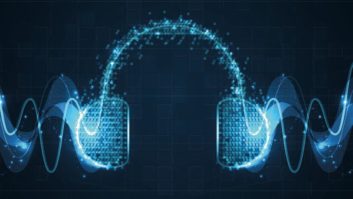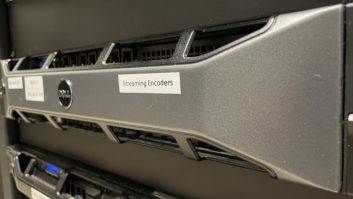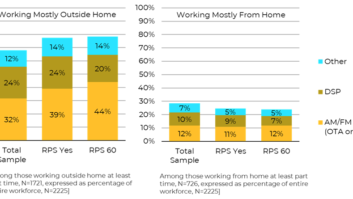LOS ANGELES�That�s the question posed in a recent blog post by Harker Research, on their site radioninsights.com.� They posed the question in slightly more gentle terms: �Can PPM accurately measure streaming?� is the headline for the post.�
�Independent estimates put online radio listening at close to 80 million listeners in PPM markets, yet according to Nielsen, streaming listeners total less than half a million.� On top of that, only one quarter of PPM markets have evenonestation with measurable streaming numbers.� Three-quarters of PPM markets lack a single measurable streaming station.�
The author then cites just one example, that of NY public radio, showing that Nielsen�s methodology accounts for only about 60% of the listening hours for WNYC AM/FM and WQXR.�
�How could PPM miss so much streamed listening?� It is considerably more difficult to capture and credit online radio listening than it is to measure analog broadcast station listening.� If PPM misses some listening to analog broadcast stations, it goes without saying that it is going to miss a higher proportions of digital listening.�� While I don�t disagree with this assertion, I have no proof to back it up, and this article doesn�t provide any, either.�
�The fundamental problem is that the digital stream of a broadcast contains much less masking content than the same material broadcast over the air. Less masking content means fewer opportunities to encode, and a greater chance that station listening credit will be lost.��
There�s a technical flaw in the logic of this last statement.� In reality, when the same program content is used for over-the-air broadcast, and for a streaming media encoder, both PPM encoders (one for OTA and one for streaming) have the exact same opportunity for placement of the PPM codes. The difference is that the streaming media encoder uses a lossy-codec in generating the stream, since bandwidth of the stream is limited.� It�s the codec’s job tonotencode audio information that cannot be heard by the end-user.� How does each lossy-codec encode the PPM tones, versus the bandwidth of the actual stream? That�s the question that needs to be asked.
�We�ve heard a great deal about �enhanced� encoding lately, and how it will solve the problem of content dependent PPM decoder capture and crediting. �Nielsen, however, has only addressed this from the standpoint of analog radio. We haven�t heard anything about solving measurement problems unique to streaming.
�If radio�s future is digital as everyone seems to agree, the first step is to make sure digital is being measured accurately, and that stations get full credit for their digital audiences.�
I�ve gone on and on about the disadvantages of the one-to-one (unicast) aspect of streaming media versus the one-to-many aspects of over-the-air broadcast. However, I need to point out that one big advantage of unicast streaming is that the streaming server keeps track of how many actual connections are in use. There�s no need for statistical analysis of PPM results; the number of open streaming connections, and thus the audience size, is known.��











